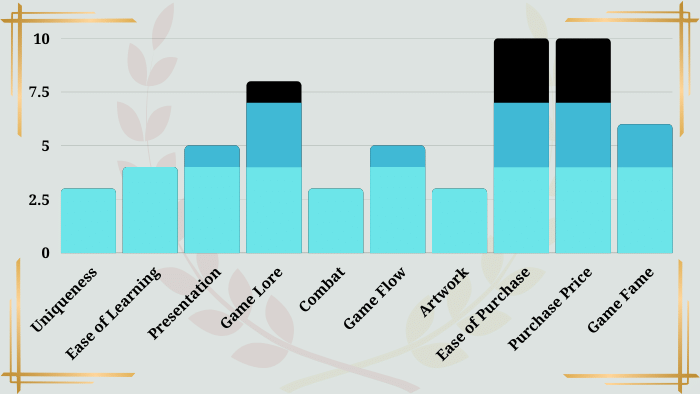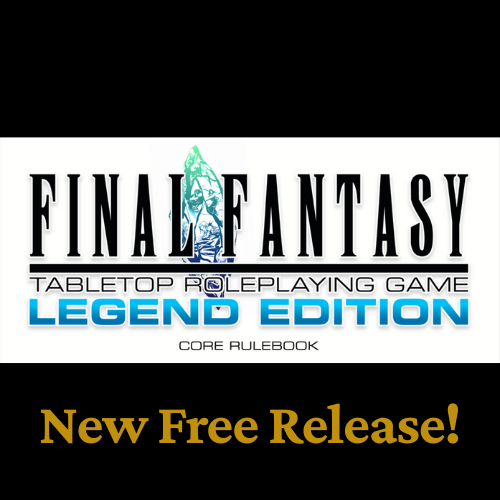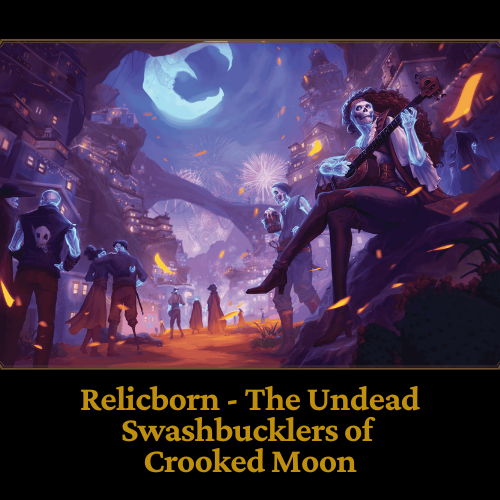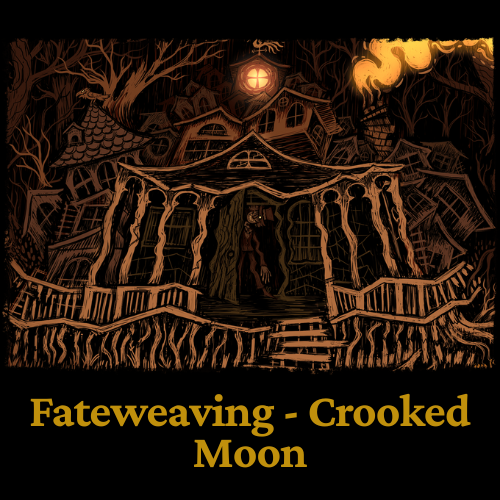Home > TTRPG Reviews
Ars Magica Review
This Ars Magica review is part of my “Best Tabletop RPGs of All Time” article. If you want to check out more TTRPGs and see how other top-tier tabletop RPGs are ranked, visit that page.
My Review – 57 / 100

Ok, I’ll be honest. I wasn’t super thrilled with my first impressions of Ars Magica, so that probably set me up to give the game a lower review. Just remember reading through this review that Ars Magica still made it to my top list of TTRPGs. Even though its score is not impressive, the ratings I gave it are in comparison to the best tabletop RPGs of all time. So, even with a lower score, I still think Ars Magica is a great game.
Back to my overall impressions though: there really wasn’t anything in my initial read-through of the rulebook that grabbed me. The experience was also a little arduous from the immense amount of reading required to grasp the game’s core concepts, which was not a good sign. Normally, for reference, the read-through of any RPG rulebook is a pretty fun experience for me as I’m a major tabletop RPG nerd.
Ars Magica has a very long rulebook, with a lot of very intense details about what I would consider to be fairly non-important elements. As with any game, if you ignore all the rules you don’t like, you can still have a lot of fun with Ars Magica.
Why do people play Ars Magica? It may just be the most complete wizard’s roleplaying game experience in existence.
Uniqueness of Ars Magica: (3/10)
In Ars Magica, you often have the chance to play (or at least create) multiple characters, who are all spell-casters of some nature. Everything about this aspect of Ars Magica, I really like. To be honest, I’m surprised more TTRPGs don’t go for this approach. In video game RPGs, for example, it’s uncommon to have only one character. Most of the time, you have your own entire party of characters that you control, with perhaps one character – or only one character at a time – who takes the lead role.
My assumption is that the practicality of tracking Exp on multiple characters, tracking items, remembering spells and abilities… all the stuff that RPGs entail, is the real reason most tabletop RPG games don’t offer multiple characters as part of the normal gameplay experience. Which, of course, you run into playing Ars Magica, as well. But to me, it’s not that encumbering.
Other than that, the most unique part of Ars Magica is the depth of the game’s magic system. There are a massive number of spells in the game, and much of the game’s rulebook is dedicated to spell details. As I’ll discuss a little more in following sections, however, the magic system – to me – is encumbering.
Overall, I give Ars Magic a pretty low score on uniqueness because though I really like aspects of the game’s system (multiple characters, roleplaying a wizard, in-depth), there really aren’t too many unique parts of the game, when compared to other tabletop RPGs. I don’t get the feeling that Ars Magica is substantially groundbreaking for the tabletop gaming genre.
Ease of Learning Ars Magica: (4/10)
Ok, so Ars Magica – straight up – is not that easy of a game to learn. There are character templates at the beginning of the rulebook. If you’re going to play Ars Magica for the first time, you should stick with a template for your character.
To really learn the game enough to build your own character and play successfully, you need to read close to the full 237 page rulebook. There are lots of complexities in Ars Magica. And while I like games with depth, I wouldn’t say that Ars Magica is very new person friendly.
To successfully do things like cast spells (very important to the game), for example, you need to read something like 30-40 pages to really understand how spell-casting works. Each player needs to read and understand those 30-40 pages too, not just the game master. Those 30-40 pages are also just the introduction to magic, and are not the spells themselves.
Ars Magica Presentation: (5/10)
When compared to games like Dungeons and Dragons, the overall layout of chapters in Ars Magica is a little odd. For example, the rulebook starts out with an introduction to the game, followed by dice and how they’re rolled, an introduction to the game’s lore, then into a glossary.
When getting into character creation, the “hermetic house summary” (an aspect of character building) comes after an introductions into stats for each hermetic. In my mind, I was thinking, “how can I choose a hermetic until I understand what the hermetic is about? And if that’s the case, why would I need to see hermetic stats, first?” Hermetics made way more sense about 20 pages in, when I finally found an overview. Basically, the game would have been easier to understand if that order was reversed.
One thing I do really like in the rulebook, however, is how starts of chapters and major sections have a spellbook-like aesthetic. Honestly, the fonts and feel of reading a wizard’s tome make up for a lot in Ars Magica when it comes to the game’s overall presentation.
Ars Magica Lore: (8/10)
Ars Magica is about “the order of Hermes, mages, and religion.” The lore is pretty in-depth, and cool. There’s certainly a lot to work if you want to play an entire RPG campaign.
Of every aspect of Ars Magica, the game’s lore is by far the best part. I would enjoy reading through the entire rulebook at a leisurely pace, almost as if it were part novel of some sort. It’d be fun to learn about each hermetic house, spell, and path of wizardry.
My honest thought when reviewing Ars Magica through virtually every step of the process was that I wished it was a campaign setting for DnD, rather than being its own game system. I think as a campaign setting for DnD, I would absolutely love Ars Magica. In fact, I’d probably play in a Ars Magica DnD setting quite a bit. I just think that the Ars Magica game, on the whole, is not nearly on the same level as games like DnD.
Combat in Ars Magica: (3/10)
The Ars Magica rulebook states that combat isn’t a big part of playing the game, which is fine. The rules for combat seem to reflect that idea, as well. When it comes down to it, combat in Ars Magica is basically just a hit chance, with damage-minus-defense-kind-of-game.
Ars Magica is all about magic. So, going into the game, I was sort of expecting some hardcore wizard duels like when Albus Dumbledore fought Voldemort in the the 5th Harry Potter book. Sadly, that wasn’t to be. In fact, I think it’s pretty much impossible to emulate a battle like that, in Ars Magica.
When you get down to it though, there’s nothing wrong with combat in Ars Magica. It just isn’t an important part of the game, and so doesn’t provide anything particularly special. It didn’t meet my expectations for what combat in a wizard roleplaying game might be.
Game “Flow”: (5/10)
Let me preface this section by again mentioning that Ars Magica – on the whole – is a great game. It also has a small but dedicated group of hardcore gamers. I will say though that you would have to be among the most hardcore tabletop roleplay gamers to give Ars Magica a shot for a full campaign.
The game is like living a life as an actual wizard. Cool in some ways, tedious in many others. The amount of depth provided by Ars Magica into magic and what it means to “be a wizard” is staggering. I think of Ars Magica as being on the same level of detail as Zweihander. In fact, you might say that Ars Magica is Zweihander in this regard, but for wizards.
This game intimidates me, and I’m a pretty hardcore tabletop roleplayer, myself. There are rules and situations in Ars Magica to play out virtually every aspect of magic you could possibly imagine. There are apprentices, laboratories, magical experimentation, familiars, enchantments, and so much more.
For anexample of the depth and complexity of Ars Magic, consider this excerpt from the “Creo Aquam Spells” a Level 5 spell called:
“Footsteps of Slipper Oil”
(*actual text taken from the game. Anything in [these symbols] are my sarcastic additions).
“R: Touch, D: Diam, T: Ind
From each of the next ten footsteps the caster of this spell takes, nonflammable grease spreads out, leaving a slick area 10 paces wide. Dexterity stress rolls are required to remain upright whenever a character on the oil does something more than challenging walking.
A roll of 6+ is needed for the average maneuver, with rolls of up to 15+ needed to (for example) make a right turn at full speed on a smooth, greased surface. The duration is the length of time that the oil lasts [umm… duh?].
This spell was invented by a rather good-natured magus, and the gestures associated with the most common variations of the spell are as comical as the effects themselves. You can stand first on one leg, and then the other, vigorously rubbing the bottom of each upturned foot, as if spreading on a salve. (Base 3, +1 Touch, +1 Diam)”
{Not all spells are just like this, but many are. It’s a lot of text for a spell that makes people slip and fall. Damn dude. Too much for me.
Artwork: (3/10)
There’s not a lot of art in the Ars Magica rulebook. Not really a consistent theme. It’s also simply not the best artwork I’ve ever seen.
What I will say though is that some of the artwork has a very old, medieval sort of feel to it. Like something you would see reading through an ornate religious text from that time period, which I really like.
Ease of Purchase: (10/10)
Ars Magica can be purchased on the Atlas Games site, and on Amazon. At both locations, the game is very easy to find and purchase. You would be surprised how many tabletop RPGs, even among the really great ones, are not as easy to purchase as Ars Magica.
Price & How Many Books Do You Need to Play: (10/10)
You just need one book to play Ars Magica. The price is only $35 for the hardcover rulebook, which is incredible value (hard cover books often cost publishers almost $35 to print a single full-color book).
Fame & Availability of Supplemental Material: (6/10)
There is lots of supplemental material for Ars Magica of all kinds. You can find supplemental books on lore, and that expand on core mechanics of the game.
In 1996, Ars Magica was ranked by Arcane Magazine (now out of print) as the 19th most popular tabletop roleplaying game of all time. I think Ars Magica was very popular at one time. Nowadays though, I don’t think there are many people playing it. I’d still say that it’s probably better than most – like nearly all – tabletop RPGs out there. It’s just not as well-known.
If I had to summarize why I think Ars Magica is so complex for today’s standards, it would be that back in the early days of tabletop gaming, gamers liked very complex games. It gave them something to dig into even when they weren’t gaming with friends, almost like it doubled as a sort of novel in the in-between.
It also provided gamers with specialized information they could glean, then bring to the group and use during a gaming session, like their own secret knowledge or power. These were the days before the internet after all, when it wasn’t super easy to get any sort of information you wanted, at any time.
It was part of the mystique of those early days to play games that were highly elaborate and complex. And for that – what Ars Magica was to that generation – I love the game. I also love the mystique about it and the immense immersion into what it’s like being a wizard.
I just don’t think that today’s tabletop crowd games for quite the same reasons.
Ars Magica is Produced By:






